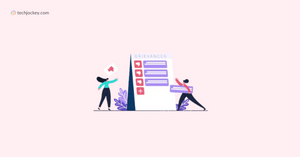What is Grievance Management Software?
Grievance Management Software is a tool designed to handle customer complaints and feedback in a strategic manner. It's not just about reacting to issues as they come up but it's about actively listening to customers and using their feedback to improve products or services.
This software helps companies address complaints promptly and efficiently, ensuring that every customer's voice is heard and their concerns are taken seriously. By analyzing customer feedback, businesses can identify any underlying issues and work towards resolving them to enhance overall product or service quality.
The goal of Grievance Redressal Software is to turn potential dissatisfaction into an opportunity to strengthen customer relationships. By addressing grievances effectively, companies can build trust and loyalty among their customer base, making them feel valued and appreciated.
Why Use Grievance Management Software
Employing Grievance Management Software can do wonders for businesses seeking to deliver excellent customer service. Whether you're a startup facing early challenges or an established company with a global clientele, handling customer complaints can be overwhelming.
This software simplifies the process by streamlining support operations, ensuring that each customer grievance receives personalized attention. By effectively managing complaints, businesses can significantly enhance customer satisfaction and reinforce relationships with their clientele.
Moreover, adhering to regulatory standards is essential for any organization. Grievance Redressal Software aids in compliance with various regulations such as ISO 9001 certification requirements, which emphasize continual improvement based on customer feedback. Meeting these criteria, businesses not only avoid legal difficulties, but also demonstrate a dedication to improve product quality and increase consumer loyalty.
Who Uses Grievance Management Software
Grievance Management Software isn't just for one department or role within a company, in fact it's a tool that can benefit multiple stakeholders across the organization. Here are some departments and individuals who use Grievance Redressal Software for its comprehensive features;
- Customer Service Teams: Customer service teams are at the forefront of handling customer complaints and feedback. Whether it's through cell phone calls, electronic mails, or live text messages, these teams interact directly with customers to address their concerns and provide support. Grievance Redressal Software streamlines this process by allowing teams to track complaints from various channels and prioritize them based on urgency. With features like case management, customer service professionals can efficiently organize complaints and assign them to the appropriate team members for resolution.
- Product Support Personnel: Product support teams play a crucial role in ensuring product quality and addressing issues reported by customers. When customers encounter problems or glitches with a product, it's up to the product support team to escalate these issues to the development or engineering teams for resolution. Grievance Management Software enables product support personnel to quickly relay complaint details to the relevant parties and track the progress of issue resolution. Additionally, these tools may offer reporting capabilities that help product support teams identify common complaints and areas for improvement in products or services.
- Managers and Administrators: Those in managerial positions are responsible for overseeing the overall grievance management process within an organization. They may create accounts for different employees based on their roles and responsibilities, ensuring that complaints are managed and resolved effectively. Grievance Management Software provides managers with insights into complaint trends and helps them make data-driven decisions to improve customer satisfaction and product quality.
Key Features of Grievance Management Software
Grievance Management Software offers a number of features to handle complaints and provide effective resolution, both internally and externally. Here are some common features you'll find in these platforms;
- Complaint Tracking: Customer feedback is received through various channels such as hotlines, web forms, social media, and live chat software. Grievance Management Software accurately documents and tracks these complaints, utilizing intuitive dashboards for easy access. It includes features like searching, filtering, and assigning cases based on priority. The software provides a structured approach to grievance management by establishing predefined stages or escalations for conflict resolution . Additionally, it receives alerts and notifications for high-priority complaints or assigned tasks that help in timely responses.
- Integration Capabilities: For data management, the software integrates with CRM systems, customer service platforms, and other relevant systems. This integration automates the extraction of complaint data onto connected platforms for enhanced efficiency and data accuracy. By sharing complaint data with relevant teams or individuals, organizations gain insights to improve customer relations.
- Follow-up Tools: Effective communication is essential for customer relations, especially when addressing negative experiences. Grievance Management Software offers scheduling and sending follow-up messages to customers as complaints progress through resolution workflows. With messaging templates, reminders, and integrations with existing software tools, organizations ensure smooth and productive correspondence for overall customer satisfaction.
- Product and Customer Insights: Through advanced analytics and reporting features, the software provides valuable insights into customer trends and feedback. Root cause analysis identifies areas for product or service improvements that guide continuous improvement efforts. Compliance and support efficiency are demonstrated to regulatory agencies through comprehensive reporting for adherence to industry standards and regulations.
- Knowledge Base Integration: Centralizing resources for frequently asked questions and troubleshooting guides, the software integrates with knowledge management systems. This facilitates quick access to relevant information for support teams and customers alike. Multimedia assets stored in the knowledge base further aid in issue resolution by providing support experts with quick access to relevant information.
Benefits of Using Grievance Management Software
Here are some of the benefits that organizations can gain from employing Grievance Management Software;
- Enhanced Customer Satisfaction: By employing Grievance Redressal Software, businesses can enhance customer satisfaction with timely and effective redressal to customer complaints. These tools ensure that customers feel valued and heard which in turn leads to increased satisfaction and loyalty towards the organization.
- Increased Operational Efficiency: The utilization of Grievance Management Software improves operational efficiency by efficiently tracking and managing complaints. This software allows organizations to better manage resources and resolve issues in a timely manner.
- Reduced Resolution Time: Armed with customer centric features, Grievance Redressal Software enables quick identification and assignment of issues for faster resolution of customer complaints. By efficiently managing complaints and prioritizing tasks, organizations can significantly reduce resolution time, thereby enhancing customer experience and satisfaction.
- Better Team Collaboration & Productivity: Grievance Management Software improves interaction and cooperation among team members. With features such as centralized complaint tracking, assignment capabilities, and real-time communication tools, teams can collaborate more effectively, share information efficiently, and work towards common goals.
- Data-Driven Insights: Grievance Redressal Software provides access to valuable analytics and data-driven insights so that organizations can understand customer needs better. Analyzing complaint data and trends allows organizations to discover areas for improvement, anticipate consumer requirements, and implement strategic initiatives.
Top Grievance Management Software Comparison
Here is a comparison table of some of the best Grievance Management Softwares along with their unique features;
| Top Grievance Management Software Comparison |
| Softwares | Features | Grievance Management Software Pricing |
| JIRA Service Management | Bug/Issue Capture, Customer History, Multi-Language, Procurement Management | Starts at $60/month |
| Freshworks Customer Service Suite | Collaboration Tools, Activity Dashboard, Tagging, Self Service Portal | Starts at $29/user/month |
| Zoho Desk | Computer Telephony Integration, Data Import/Export, Live Chat, Macros/Templated Responses | Starts at $14/user/month |
| Issuetrak | Bug Tracking, Approval Workflow, Commenting/Notes, Feedback Management | Starts at $26/user/month |
| HappyFox Help Desk | Automated Routing, Feedback Management, Self Service Portal, Reporting/Analytics | Starts at $39/user/month |
| Front | Call Recording, Drag & Drop, Account Alerts, On-Demand Communications | Starts at $19/user/month |
| Zendesk Suite | Automatic Call Distribution, Activity Dashboard, Content Management, Issue Scheduling | Starts at $55/user/month |
| Customer Frontlines | Customer Journey Mapping, Email Management, Data Visualization, NPS Survey Structure | Free |
| ProProfs Help Desk | Real Time Analytics, Interaction Tracking, Email Management, Customizable Reports | Starts at $15/month/feature |
| A1 Tracker | Cataloging/Categorization, Approval Process Control, Client Management, Data Synchronization | Starts at $800/month |
Factors to Consider When Selecting Grievance Management Software
Here are key considerations to keep in mind when selecting the ideal Grievance Redressal Software for your business;
- Identify Your Business Needs: Before buying a Grievance Management Software, take a step back to go through your organization's specific pain points and requirements. See if you are struggling with customer communication, complaint tracking, or prioritization of grievances. Understanding your needs will help you in selecting a software solution that helps you address the problems you face in customer service.
- Consider the Software's Features: As you explore different Grievance Management Software options, pay close attention to the features and functionalities offered. Key features to consider include;
- Ticket management: It involves efficiently creating, tracking, and managing client complaints.
- Workflow automation: Helps in automating repetitive tasks like complaint assignment and escalation.
- Communication management: Seamlessly interact with customers via various channels.
- Analytics and reporting: Gain valuable insights into complaint metrics and customer satisfaction levels.
- Customization: Tailor fields, forms, and workflows to suit your unique business requirements.
- Ensure that the software's features align with your organization's needs and priorities to maximize its effectiveness.
- Assess User-Friendliness: The usability of the Grievance Management Software is paramount for both your team and customers. Look for intuitive interfaces that offer a clear picture of complaints and their progress. The program should be simple to use and available from several devices and browsers.
- Evaluate Integrations: Consider how the Grievance Redressal Software integrates with your existing company systems, such as marketing automation, CRM, and helpdesk. Integration can simplify complaint resolution processes by providing comprehensive customer data and previous interactions.
- Check Security Features: Given the sensitive nature of customer information handled by Grievance Management Software, prioritize security features. Look for strong security measures such as data encryption, access controls, and regular security upgrades to successfully protect customer data effectively.
- Consider Scalability: Choose a Grievance Management Software solution that can adapt with your business growth. Scalable software should accommodate increasing user numbers, complaint volumes, and workflow complexities as your organization expands.
- Evaluate Pricing and Support: Take into account the software's pricing structure and support options. Choose a solution that meets your budget and provides adjustable pricing depending on user or ticket volumes. Additionally, consider suppliers who provide dependable customer support, such as training, initial integration and technical help.
- Prioritize Customer Self-Service Options: Go for software that includes self-service capabilities like knowledge bases, FAQ sections, and chatbots. These tools allow consumers to resolve complaints independently, reducing the burden on your support team and increasing overall satisfaction.
- Embrace Customization: Choose a software solution that allows for extensive customization of fields, forms, and workflows to accommodate your organization's unique processes and requirements effectively.
- Utilize Robust Analytics and Reporting: Choose software that provides full analytics and reporting tools to acquire significant insights on complaint patterns and performance indicators. This data-driven strategy promotes educated choices and proactive problem solving.
- Implement User Permissions and Access Controls: Ensure the chosen Grievance Redressal Software offers granular user permissions and access controls to safeguard sensitive information and restrict access based on roles and responsibilities.
- Prioritize Training and Onboarding: Select a software provider that offers thorough training and onboarding options to equip your team with the knowledge and skills needed to utilize the software effectively from day one.





















